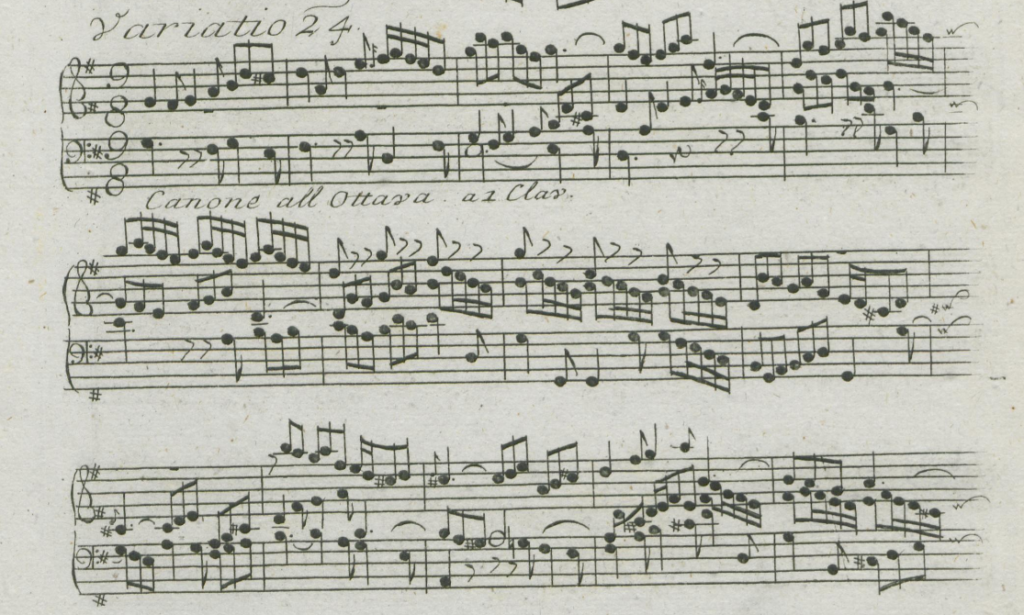To continue our exploration of the Goldberg Variations, let’s listen to Glen Wilson’s recording of 1990, made in Haarlem, The Netherlands. He plays a harpsichord made by Jaap Klinckhammer in 1989, after Michael Mietke, Berlin ca. 1700.
Picking up where we left off, let’s start with Variation 19. It’s a triple meter dance-like piece, reminiscent of a menuet, written in 3 voices, for one manual. Its levity and grace come from constant syncopations going into the first beat of the bar frequently originating in the second beat of the previous one, while at least one of the voices is always moving in sixteenths.
A virtuosic toccata follows as Variation 20, for two manuals. It’s written in two voices, with one line presenting a pattern of eighth notes while the other hand inserts sixteenths between them, broken up by rests. After this structure is established, sextuplets show up in the second half of the first section to spice things up.
Contrasting with this virtuosity, Variation 21, the canon at the seventh, is slow, deliberate, and somewhat somber. This is due to being in minor mode (second in the set) and to its elaborate bass line full of chromaticism. The two canonic lines (middle and top voices) are offset by 2 beats in the 4/4 bar.
Variation 22, marked “alla breve”, features three voices in imitation on top of the bass line. In the first section, they enter in the order tenor-alto-soprano, which is reversed in the second section. The ground bass is presented in a fairly unadorned manner, making it easy to follow the harmonic progression.
The virtuosic Variation 23 requires two manuals, and it reads like a study in scales. The two hands have scales up and down in sixteenths, offset by an eighth, with the occasional shorter run in thirty-seconds. Mordents and appogiaturas are thrown into the mix, together with a short percussive motif of 2 repeated sixteenths at different intervals. Towards the end, material similar to the eighths with intercalated sixteenths of Variation 20 shows up, with the twist that it’s now two lines, in thirds and sixths.
With this we get to the next canon, now at the octave (Variation 24). It’s set in 9/8 with the two canonic parts on top of a bass line. What’s notable about this variation is that the canonic voices reverse their roles as leader and follower within each half of the variation. First the top line leads, followed by the middle voice two bars later. Measures 7 and 8 are a bridge that allows the middle voice to take the lead in bar 9, with the top line following in bar 11. In the second half, the middle voice starts as the leader, but the top line then assumes this role in bar 24 with the middle voice following in bar 26. This one definitely requires some careful review of the printed page to wrap one’s mind around!
